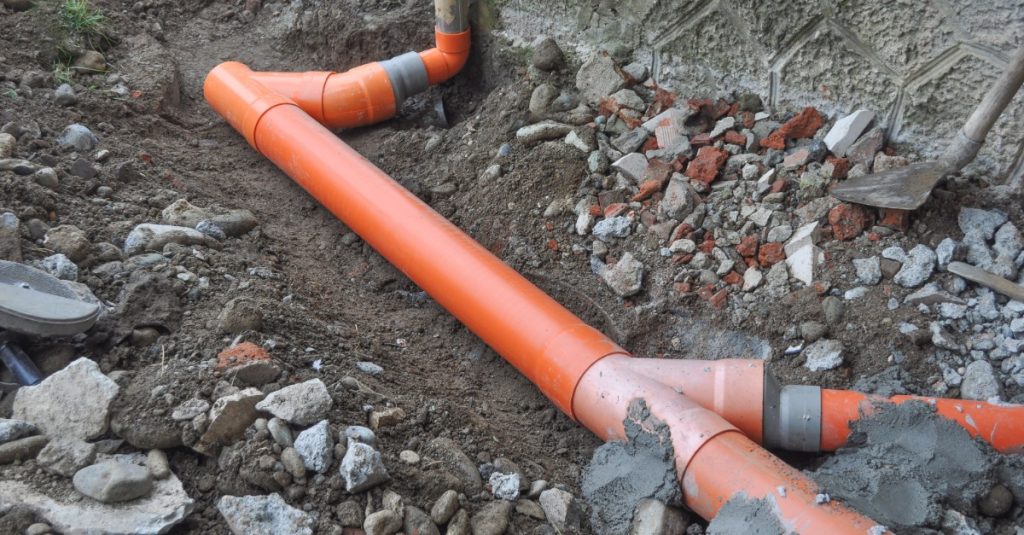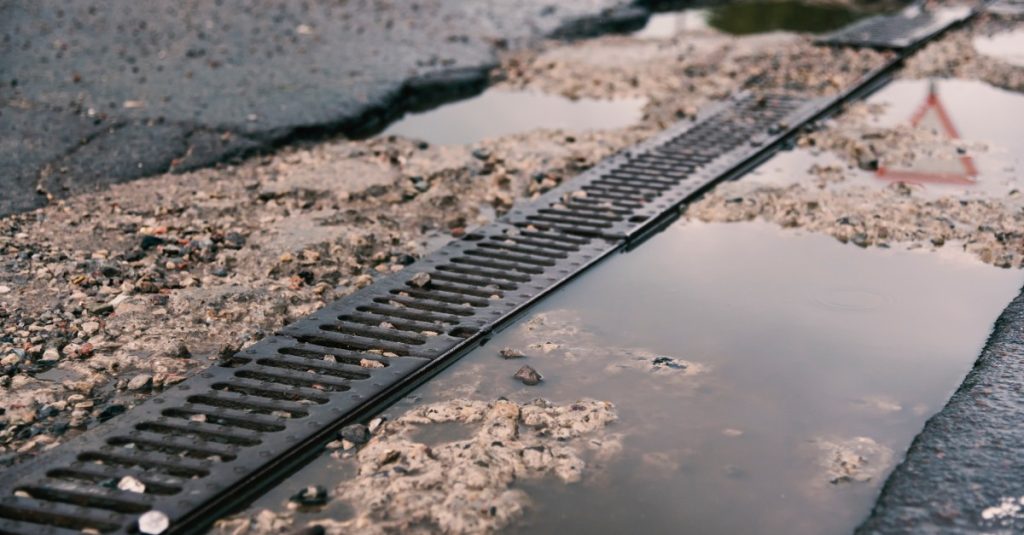In our daily lives, we often overlook the critical role that our drainage systems play until something goes wrong.
One such system that is crucial for both homes and businesses is the foul water drainage system. For a company like Any Drains Direct, understanding the intricacies of this system is part of everyday life. But as a home or business owner, it’s also vital for you to have some knowledge about it.
In this blog, we will comprehensively cover the topic of foul water drainage, looking at what it is, how it functions, why it’s important for homes and businesses, how to detect issues and properly maintain your foul water drainage system and also what to do in the event of an emergency.
What is foul water drainage?
Foul water or waste water, is any water that has been used in a way that makes it unfit for immediate reuse without undergoing treatment. It includes water from sinks, showers, toilets, washing machines, and dishwashers. The system that manages this used water, transporting it away from your property to the local sewer, is known as the foul water drainage system.
Foul water drainage vs surface water drainage

Foul water drainage
vs

Surface water drainage
Alongside foul water drainage, we also have surface water drainage. Surface water drainage handles rainwater and other precipitation that falls on your property. This system collects water from roofs, paths, driveways, and other surfaces and directs it either into a soakaway (a pit filled with rubble or coarse stone that allows the water to percolate into the ground), a watercourse, or the local storm sewer.
Understanding these two systems is key to maintaining a healthy, efficient property. While foul water drainage prevents wastewater from backing up into your home or business, surface water drainage prevents flooding and water damage from heavy rains or melting snow.
Functions of foul water drainage systems
The foul water drainage system plays several critical roles in maintaining the health and safety of your property, as well as the broader environment.
- Preventing contamination: Without a proper foul water drainage system, wastewater could potentially mix with fresh water supplies, leading to contamination. This system ensures used water is kept separate from clean water.
- Avoiding health issues: Wastewater can be a breeding ground for bacteria and disease-causing pathogens. A correctly functioning foul water drainage system ensures this water is safely transported away from your home or business, reducing the risk of health issues.
- Protecting the environment: By transporting wastewater to treatment facilities, the foul water drainage system helps prevent untreated water from entering our rivers and seas, thereby protecting aquatic life and the broader ecosystem.
By understanding these purposes, you can better appreciate the importance of regular maintenance and prompt repairs to your foul water drainage system.
How foul water drainage systems handle and treat wastewater
The foul water drainage system is a marvel of modern engineering. It handles wastewater in a way that is both efficient and environmentally responsible. Here’s a step-by-step breakdown of how it works:
Collection: The process begins at your property, where wastewater from various sources such as sinks, showers, toilets, washing machines, and dishwashers enters the foul water drainage system.
Transportation: The waste water is then transported away from your property through a series of pipes. These pipes are installed at a slight downward angle to help the water flow towards the local sewer system using gravity.
Treatment: Once the wastewater reaches the local sewer system, it is transported to a sewage treatment plant. Here, the wastewater undergoes a series of treatments to remove contaminants, making it safe to be released back into the environment. The treatment process typically involves three stages:
- Primary treatment: Here, solids are allowed to settle and are removed from the wastewater.
- Secondary treatment: This stage uses biological processes to further purify the wastewater.
- Tertiary treatment (if applicable): Some treatment plants use a third stage to remove any remaining impurities, particularly nitrogen and phosphorus, which can be harmful to aquatic environments.
Disposal or reuse: Once the wastewater has been treated, it is either discharged back into local water bodies, used for irrigation, or in some cases, further treated to be reused as potable water.
Why is foul water drainage important for homes and businesses?
Prevention of property damage
A blocked or malfunctioning foul water drainage system can lead to backups or leaks, causing potential damage to the property. This could include damp, mould, and structural damage, all of which could be costly to repair.
Compliance with regulations
In many areas, it is a legal requirement for properties to have an effective foul water drainage system. Failure to comply could result in fines or other penalties.
Business continuity
For businesses, in particular, any issues with foul water drainage could disrupt operations, leading to downtime or even temporary closure. Regular maintenance and prompt repairs can help prevent such disruptions.
Faulty or inadequate foul water drainage systems can cause a lot of trouble. They can lead to backups and leaks, which can cause damage to your property like dampness, mould, and even cracks in the walls. If you don’t have a good system you may get fined by the government or have to close your business for repairs. So it is important to make sure your system works well!
How to detect issues with foul water drainage systems
Keeping an eye out for signs of trouble can help you catch and address drainage issues before they escalate. Here are some tips for detecting potential problems:
Slow drains: If you notice that sinks or showers are draining slower than usual, this could be an early sign of a blockage in the system.
Bad smells: Unpleasant odours coming from your drains can be a clear indication of a problem, often a blockage or trapped debris in the pipes.
Gurgling noises: If you hear unusual noises, such as gurgling, coming from your drains, it could be a sign of a blockage or a trapped air pocket in the system.
Regular backups: If your toilets, sinks, or showers frequently back up, this could indicate a serious issue with your drainage system.
Wet spots or puddles: If you notice wet spots or pooling water around your property, especially near where your drainage pipes run, this could signify a leak in the system.
Unexpected increase in water bill: A sudden, unexplained increase in your water bill could be a sign of a hidden leak in your drainage system.
By being vigilant and mindful of these signs, you can detect potential problems early on and prevent them from becoming major issues.
If you notice any of these symptoms it’s worth contacting a professional team for help.
Maintaining foul water drainage systems
Your foul water drainage system should be inspected and cleaned regularly to ensure it is functioning properly. This can involve a thorough visual inspection of the plumbing, as well as more in-depth investigations such as camera inspections to detect any blockages or leaks.
You may also need to consider replacing certain components if there are signs of damage or wear and tear.
Professional maintenance and repairs can help prolong the lifespan of your drainage system and reduce the risk of costly or disruptive emergencies.
Emergency situations and what to do
In rare cases, you may encounter an emergency situation such as a serious blockage or leak. If this happens, it’s important to take immediate action to prevent further damage.
Shut off the main water supply and contact a professional drainage specialist right away for help. They will be able to assess the issue quickly and advise on the best course of action.
When it comes to foul water drainage systems, prevention is better than cure – but emergencies do happen.
Keeping an eye out for signs of trouble and scheduling regular maintenance will help protect your property from damage and disruption. And if you do encounter any issues, make sure to act swiftly and contact a professional for assistance.
Summary
Foul water drainage systems are essential for homes and businesses to transport wastewater away from the property and safely back into the environment.
To ensure these systems work properly, it’s important to keep an eye out for signs of trouble such as slow drains, bad smells, gurgling noises, frequent backups, wet spots or puddles, and unexpected increases in your water bill. Regular inspections and maintenance can help keep these issues at bay, while professional assistance should be sought in the case of an emergency.
By following these steps, you can protect your property from any potential damage or disruption caused by drainage problems. By taking proactive action now, you will save yourself a lot of trouble and expense later on down the line.
Thanks for reading! Hopefully, this article has been helpful in understanding more about foul water drainage systems and how to keep them in tip-top shape.
For a thorough inspection, maintenance, or repairs of your foul water drainage system, contact Any Drains Direct today.
 01732 667 688
01732 667 688

